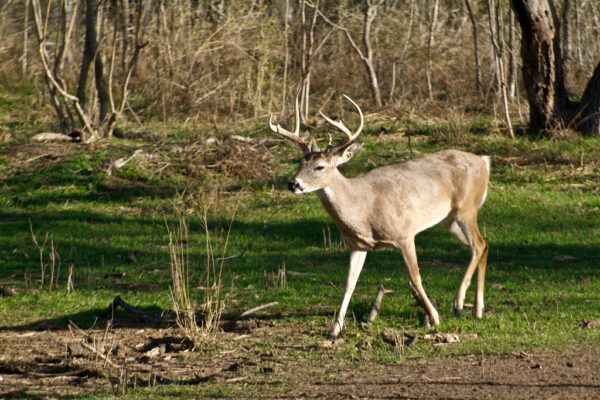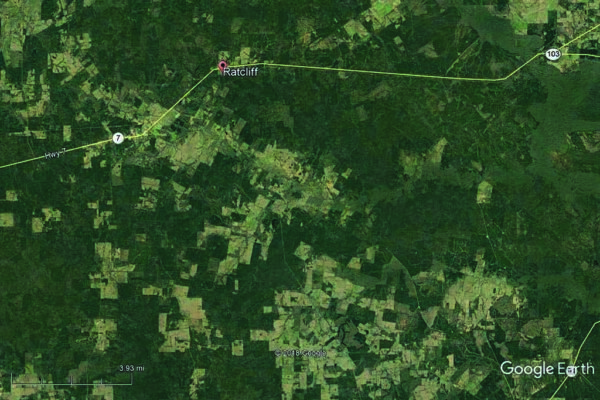By James Kroll
In a recent article (Sep/Oct 2020), I discussed implications of the COVID-19 virus on the future of hunting. I would like to take this discussion a step farther, by addressing one of the emerging trends—people returning to the land. The demand for land where you can manage and hunt deer never has been higher. Since the 1990s, we have managed hunting clubs and properties in the northern Upper Lower Peninsula of Michigan.
It has been an economically depressed area, where bargains on land were easily found. Since the appearance of COVID-19, we’ve seen a modern-day land rush on the area and land prices have skyrocketed. And it is not just Michigan. It’s happening all over the country, as people seek a new lifestyle. Yet, the demand for land also has created significant issues concerning the actual suitability of specific properties for wildlife management. Unfortunately, some real estate agents have never seen a property that was not suitable to meet the goals of the buyer. So, I decided to arm you with the decision-making tools to help you realize your dreams.
Significant investment
My longtime friend, the late Bill Carter, spent an entire year looking for the perfect property to grow big bucks. He told me when he found what turned out to be the Sombrerito Ranch, just north of Laredo, he poured salt instead sugar into his coffee at a meeting with the agent. It was a sure giveaway that he wanted to buy it.
His success with the Sombrerito is testimony to the value of objectively evaluating a property to meet your goals. Buying land is a significant investment, ranging from several thousand dollars to millions. Making the wrong decision not only wastes your money, but may end up costing you years to correct deficiencies. There already are law suits over misrepresentations about a specific property.
Important “sales points”
What are the “sales points” in a land advertisement? Well, how about the property is ready to hunt trophy bucks? It is well-stocked with high scoring bucks. Another sales point: Are expensive land management practices already in place? What about water— the most critical factor in deer management? Let’s take these points one step at a time.
How do you know great genetics exist on the property? Just because the owner claims to have stocked the property may not translate to bigger bucks. First of all, when you’re buying can affect your decisions. Be careful looking at a place in the worst time to evaluate bucks.
Late winter and early spring find bucks that have cast their antlers, making it impossible to assess age structure and antler quality. Beware of photographs of big bucks because they can cherry pick the actual buck population, or they could be bucks that do not even live on the property. You would be surprised at the promotional photographs I see of bucks I know very well. They are stock photographs!
Trail cam census
The best way to assess the herd is by conducting a trail camera census. Depending on location and size of property, you will need a camera density of one per 100-300 acres, run for 10 days over bait, where legal. You will photograph up to 95% of the deer. Then go through the hundreds of photographs, recording the estimated age and quality of bucks and, depending on time of year, the fawn crop or recruitment rate. Some fine biologists out there will do this for you. A good camera census can give you information that otherwise will take years to determine.
Evaluate land and habitat
Now, let’s evaluate the land and habitat. Start with rainfall data for that area, looking not only at the total annual rainfall, but also when significant rainfall occurs. Then, you should look at a time series of aerial photos to see how the property has changed over time. If an aerial from 2019 looks exactly like one from 2008, there hasn’t been any habitat work done on the property.
I noted earlier that water is critical. Again, using aerials, count and locate the number of PERMANENT water sources and their location. If there is a watering system, how is it distributed and what are the sources?
If the property is presented as having been supplementally fed, ask for records of feed use. In most areas, deer will need about 2 pounds per day, on average, even on well-managed properties.
Lifestyle convenience
Lastly, is the property located convenient to your lifestyle? Driving for five hours each way may limit the amount of use. Critically analyze how much time you actually can spend on the property.
These are just a few of the criteria I use in evaluating properties. If you take this advice and let your brain, not your heart, make a purchase decision, you will be better able to realize your dream of having a family heritage deer hunting and recreational property that is used and enjoyed by the entire family.




